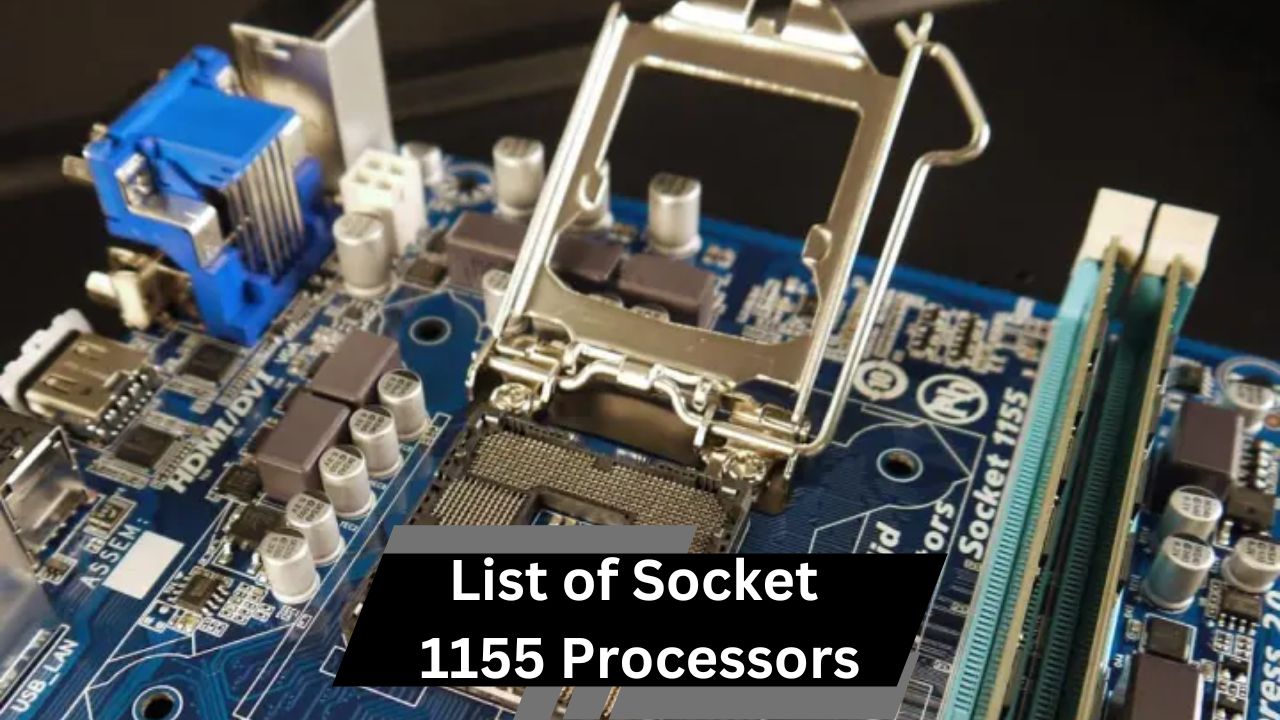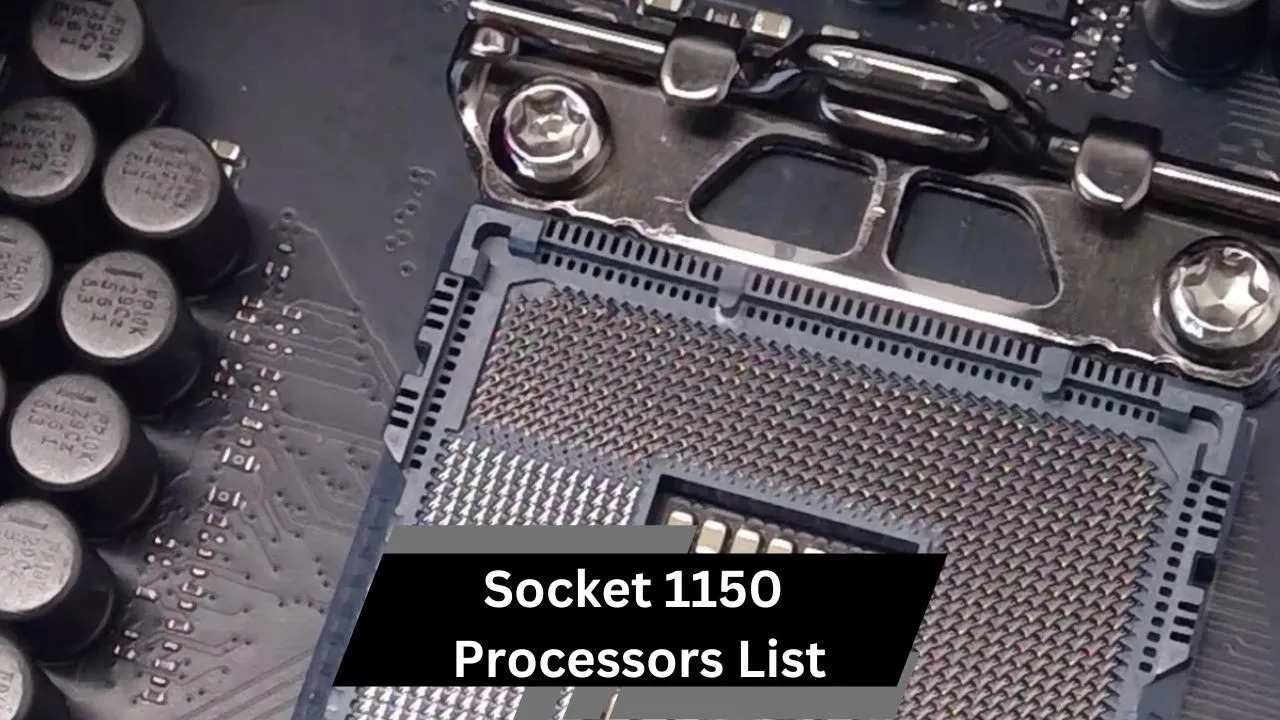Socket 775 (LGA775) by Intel is a versatile CPU socket supporting a range of processors, key in evolving from single-core to multi-core computing.
Socket 775, also known as Socket T, is a CPU socket that played a crucial role in the evolution of Intel processors. Introduced in 2004, this socket became a standard in many desktop and workstation motherboards during its time. In this guide, we will delve into the details of Socket 775 processors, exploring their features, different types, and their performance, all in easy-to-understand terms.
What is Socket 775:
Socket 775, officially known as LGA775 (Land Grid Array 775), is a type of CPU socket designed by Intel. In older CPU designs, the pins that connected the CPU to the motherboard were located on the CPU itself. However, with the introduction of Socket 775, Intel moved these pins to the motherboard, creating a more stable and secure connection. This design not only made the installation process easier but also reduced the risk of damaging the delicate pins on the CPU.
The Evolution of Socket 775 Processors:

The introduction of Socket 775 marked a turning point in the way CPUs were designed and used. Before this, Intel relied on older socket types that were limited in their capabilities. With Socket 775, Intel was able to introduce new technologies and enhancements that significantly improved performance and efficiency.
Popular Socket 775 Processors:
Socket 775 supported a wide variety of processors, each catering to different user needs. Below is an overview of some of the most popular processors that used this socket.
Intel Core 2 Duo Series:
Intel Core 2 Duo E6600:
- Clock Speed: 2.4 GHz
- Cores/Threads: 2/2
- Cache: 4 MB L2
- Overview: The Core 2 Duo E6600 was among the first processors in the Core 2 Duo lineup. It offered excellent performance for its time, providing users with smooth multitasking capabilities and solid gaming performance. Its dual-core architecture made it a favorite for those looking to balance cost and performance.
Intel Core 2 Duo E8400:
- Clock Speed: 3.0 GHz
- Cores/Threads: 2/2
- Cache: 6 MB L2
- Overview: The E8400 built on the success of its predecessors, delivering higher clock speeds and more cache memory. This processor was well-suited for single-threaded applications, making it a top choice for gaming enthusiasts and power users. Its improved performance and energy efficiency made it a standout in the Core 2 Duo series.
Intel Core 2 Quad Series:
Intel Core 2 Quad Q6600:
- Clock Speed: 2.4 GHz
- Cores/Threads: 4/4
- Cache: 8 MB L2
- Overview: The Q6600 was a game-changer in the world of CPUs. As one of the first widely available quad-core processors, it brought a significant boost in performance, particularly in multitasking and multi-threaded applications. Whether you were editing videos, running virtual machines, or playing the latest games, the Q6600 could handle it all.
Intel Core 2 Quad Q9650:
- Clock Speed: 3.0 GHz
- Cores/Threads: 4/4
- Cache: 12 MB L2
- Overview: The Q9650 took everything great about the Q6600 and pushed it further. With a higher clock speed and larger cache, this processor was designed for users who needed maximum performance. It was ideal for high-end gaming, video rendering, and other demanding tasks that required serious computing power.
Intel Pentium Dual-Core Series:
Intel Pentium Dual-Core E2160:
- Clock Speed: 1.8 GHz
- Cores/Threads: 2/2
- Cache: 1 MB L2
- Overview: The E2160 was an entry-level processor that offered reliable performance for everyday tasks like web browsing, word processing, and light multimedia use. Its dual-core design provided a good balance between performance and power consumption, making it a popular choice for budget-conscious users.
Also read: Socket 1366 Processors List – Key Models and Features!
Intel Pentium Dual-Core E5300:
- Clock Speed: 2.6 GHz
- Cores/Threads: 2/2
- Cache: 2 MB L2
- Overview: The E5300 was a step up from the E2160, offering better performance for slightly more demanding applications. It was well-suited for home users who needed a bit more power for multitasking or running more complex software. The E5300 provided a solid, affordable option for users upgrading from older single-core processors.
Intel Xeon Series:
Intel Xeon X5450:
- Clock Speed: 3.0 GHz
- Cores/Threads: 4/4
- Cache: 12 MB L2
- Overview: The Xeon X5450 was designed for servers and high-end workstations. Its quad-core architecture and high clock speed made it ideal for heavy computational tasks, such as 3D rendering, large database management, and other professional applications. The X5450 was favored by businesses that required robust, reliable performance.
Intel Xeon E5430:
- Clock Speed: 2.66 GHz
- Cores/Threads: 4/4
- Cache: 12 MB L2
- Overview: The E5430 offered a balanced mix of performance and power efficiency. It was commonly used in servers and professional workstations where consistent, reliable performance was critical. The E5430’s efficiency and processing power made it a solid choice for enterprises needing dependable computing power for complex tasks.
Key Features of Socket 775 Processors:

Socket 775 processors offered a range of features that made them popular during their time. Here are some key aspects:
- Wide Compatibility: Socket 775 supported a broad range of processors, from budget-friendly models to high-performance CPUs. This made it a versatile choice for various users, whether they were building a simple home computer or a more powerful workstation.
- Performance: The performance of Socket 775 processors varied depending on the model. Dual-core processors provided enough power for everyday tasks and light gaming, while quad-core models were capable of handling more intensive applications like video editing and 3D rendering.
- Energy Efficiency: Intel focused on improving energy efficiency with Socket 775 processors. This was especially true for the later models, which offered better performance while consuming less power compared to older CPU designs. This made Socket 775 processors not only powerful but also cost-effective in terms of energy use.
- Upgrade Potential: For users with older systems, Socket 775 processors provided a viable upgrade path. Whether you were looking to boost your system’s performance with a quad-core processor or simply needed a more efficient CPU for basic tasks, Socket 775 offered various options to meet those needs.
- Legacy Support: Even though Socket 775 has been succeeded by newer technologies, it remains a crucial part of computing history. Many older systems still in use today are based on Socket 775, making it important for users to understand their options for maintenance and upgrades.
The Legacy of Socket 775:
Socket 775 processors played a significant role in the development of modern computing. They bridged the gap between older single-core processors and the multi-core designs that dominate today’s market. During its time, Socket 775 was at the forefront of PC technology, enabling users to experience unprecedented levels of performance and efficiency.
FAQ’s:
1. What is Socket 775?
Socket 775, also known as LGA775, is a type of CPU socket designed by Intel, widely used in desktop and workstation motherboards.
2. Which processors are compatible with Socket 775?
Socket 775 supports a variety of processors, including the Intel Core 2 Duo, Core 2 Quad, Pentium Dual-Core, and Xeon series.
3. What are the key features of Socket 775 processors?
Key features include wide compatibility, varying performance levels, improved energy efficiency, and upgrade potential for older systems.
4. Is Socket 775 still relevant today?
While newer technologies have surpassed it, Socket 775 remains important for users with older systems and those interested in vintage computing.
5. Why was Socket 775 significant in computing history?
Socket 775 was significant because it enabled the transition from single-core to multi-core processors, paving the way for advancements in CPU technology.
Conclusion:
Socket 775 was more than just a CPU socket; it was a cornerstone of Intel’s processor lineup for many years. The wide range of processors that used this socket—from budget-friendly dual-core models to powerful quad-core CPUs—allowed users to tailor their systems to their specific needs, whether for everyday computing or professional-level tasks.




